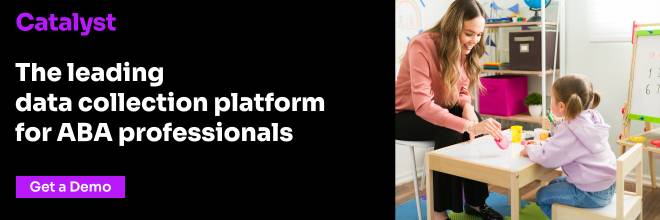As BCBAs, one of your key responsibilities is to ensure that Registered Behavior Technicians (RBTs) receive adequate training. This article will explore practical ways to improve RBT training effectiveness, including strategies and examples.
Customizing RBT Training Programs:
One essential step to improve RBT training effectiveness is to tailor programs to meet the specific needs of RBTs and the individuals they will be working with. Allowing for customization can enhance engagement and application of training concepts. Here are some ways to customize RBT training programs:
1. Assessing Trainee Needs
Before customizing RBT training programs, supervisors should thoroughly assess trainee needs. Identify the specific areas in which trainees require additional support or proficiency. This assessment may include interviews, surveys, and observations, allowing for targeted customization of the training program.
2. Tailored Content
Customization of training content involves selecting and prioritizing the most relevant topics based on the assessed needs. This can include focusing on specific behavioral interventions, assessment methods, or ethical considerations. By tailoring the content, trainees receive targeted instruction that aligns with their and their clients’ needs.
3. Varied Delivery Methods
Customizing RBT training programs also requires adapting the delivery methods to cater to different learning styles and preferences. Incorporate various instructional techniques, such as online modules, in-person workshops, case studies, role-playing exercises, or video demonstrations. By providing a variety of delivery methods, supervisors can engage trainees and facilitate effective learning outcomes.
4. Real-World Case Examples
Including real-world case examples and scenarios relevant to the trainees’ target population enhances the practicality and applicability of the training program. Trainees benefit from analyzing and problem-solving these cases and learn to apply the concepts to realistic scenarios. This approach bridges the gap between theory and practice, ensuring that trainees can effectively transfer their knowledge to real-world client situations.
5. Ongoing Clinical Supervision and Feedback
Customized RBT training programs should include ongoing clinical supervision and feedback. This aspect allows trainees to receive individualized guidance and support from experienced supervisors. These can be conducted as regular check-ins, case consultations, observation sessions, etc. Either way, these sessions provide opportunities for trainees to discuss challenges and receive tailored strategies for improvement.
6. Evaluation and Continuous Improvement
To ensure the effectiveness of the customized RBT training program, regularly evaluate its impact. Collect trainee feedback on the training materials, instructional methods, and overall program structure. Use this feedback to make continuous improvements and modifications to enhance the program’s effectiveness and meet the evolving needs of trainees.
Get a free demo of Catalyst today!
Providing Regular and Ongoing Support
Supporting RBTs throughout their training journey is crucial in ensuring their success. Continuous support can significantly impact RBT competence and improve training outcomes. Consider the following:
- Establishing a Supportive Environment: Creating a supportive environment is the foundation of providing ongoing support to RBTs. Foster a culture of open communication, trust, and collaboration. Develop a relationship built on mutual respect and encourage RBTs to seek guidance, ask questions, and share challenges they encounter during their training.
- Transparent Expectations and Goals: Communicate expectations and goals to RBTs. This includes providing a detailed training program outline, explaining the performance criteria, and setting specific objectives for skill acquisition. Clear expectations help RBTs understand their expectations, reduce ambiguity, and facilitate their progress.
- Regular Check-ins and Supervision: Schedule frequent meetings with RBT trainees to provide guidance, answer questions, and offer support. Depending on the organization’s structure, these sessions can be one-on-one or group-based. During the meetings, BCBAs can review progress, address challenges, provide feedback, and offer strategies for improvement.
- Case Consultations: Including case consultations in RBT training programs allows supervisors to provide in-depth support for complex cases. These consultations can be conducted through in-person meetings, virtual platforms, or written communication. The goal is to guide RBTs in designing effective behavior intervention plans and addressing specific implementation challenges.
- Ongoing Training and Professional Development: Supervisory support extends beyond initial RBT training. BCBAs should facilitate ongoing training and professional development opportunities for RBTs. This can include additional workshops, webinars, or conferences to expand their knowledge and skills. Providing RBTs access to resources and continuing education opportunities ensures their ongoing growth and competence.
- Celebrating Achievements: Recognizing and celebrating RBT achievements during training contributes to their motivation and engagement. Supervisors should acknowledge milestones and progress made by RBTs, individually and as a team. Taking the time to recognize accomplishments boosts confidence and creates a positive learning environment.
Using the RBT Initial Competency Assessment
The RBT initial competency assessment is essential for individuals seeking a Registered Behavior Technician (RBT) certification. This assessment can be conducted by a Responsible Assessor who has completed the required 8-hour supervision training. It is designed to evaluate an applicant’s range of skills and knowledge to perform behavior-analytic services competently. However, it can also be used to identify improvement areas and ensure high-quality care delivery. The assessment results can help supervisors tailor training strategies and develop individualized training plans. Utilizing the results can yield more personalized and practical training, optimizing skill development and improving client outcomes.
How Catalyst Can Help with RBT Training
Catalyst’s data collection software improves RBT training effectiveness by enabling real-time data collection, standardized procedures, and robust analysis tools. Trainees can receive immediate feedback and supervision, while BCBA supervisors can monitor progress and provide timely guidance. The software’s remote training capabilities offer flexibility, and its data analysis features help trainees understand client behavior and make informed decisions. Using Catalyst, RBT trainees can enhance their skills and improve data collection accuracy. To learn more about Catalyst, schedule a free personalized demo.

